STUDENTS were all over the place, checking lights, testing sound, practicing bows and curtsies, making last-second adjustments to their pitch and phrasing. It was an April afternoon and the cast and crew of the upper school 2015 spring musical “Into the Woods” were moving restlessly about Blackford Theater. In just over an hour, they would finally play to an audience after months of preparation, yet this was not so much the end of their effort as the beginning of another, as in a couple months they would be in the thick of the world’s largest arts festival.
The Edinburgh Festival Fringe is the oldest festival of its kind, a city-wide event with thousands of shows taking place in hundreds of venues. “It’s just mind-blowing, the innovation and the quality of work that happens at the Fringe,” said Laura Lang-Ree, performing arts chair and “Into the Woods” director.
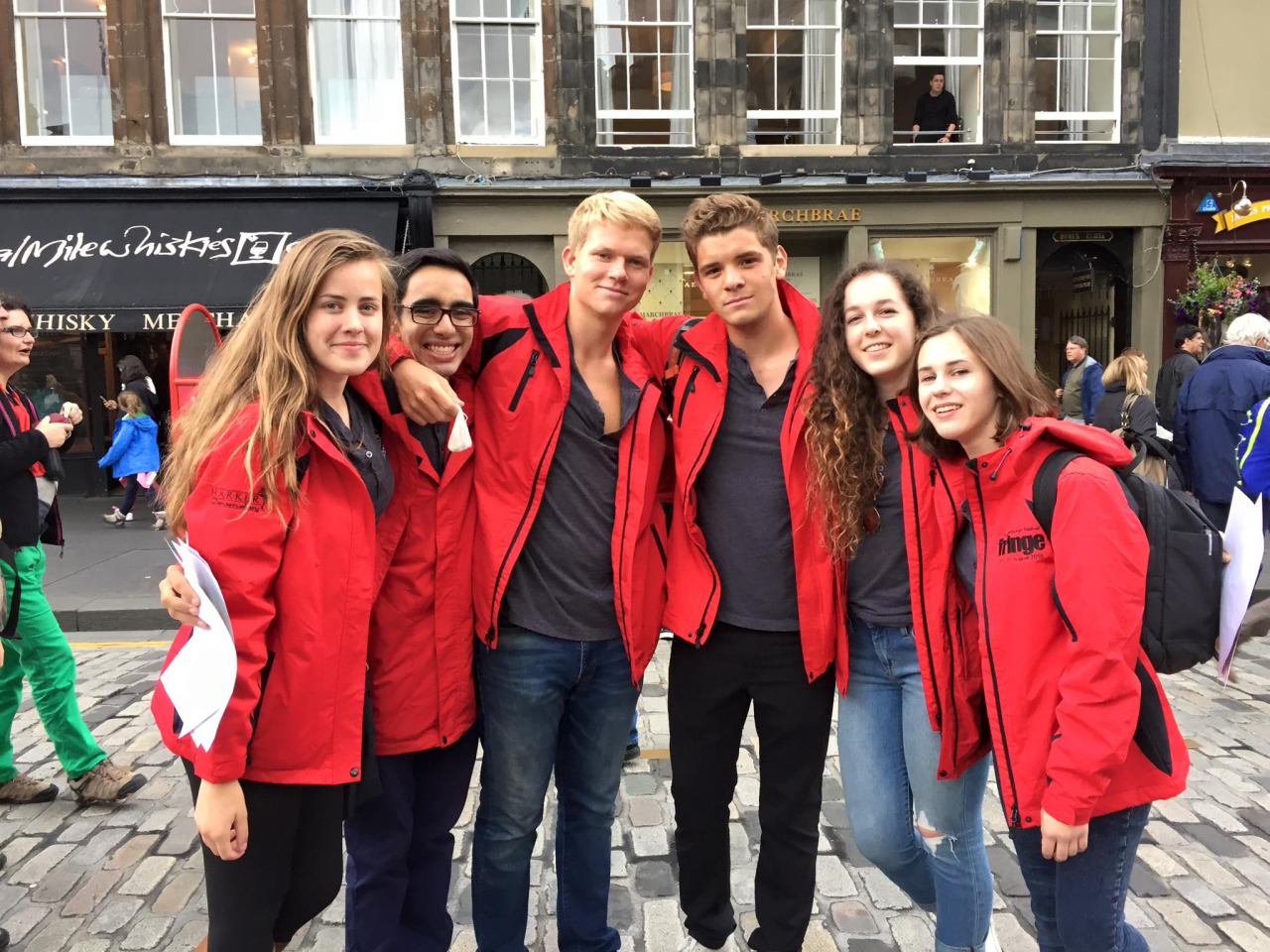
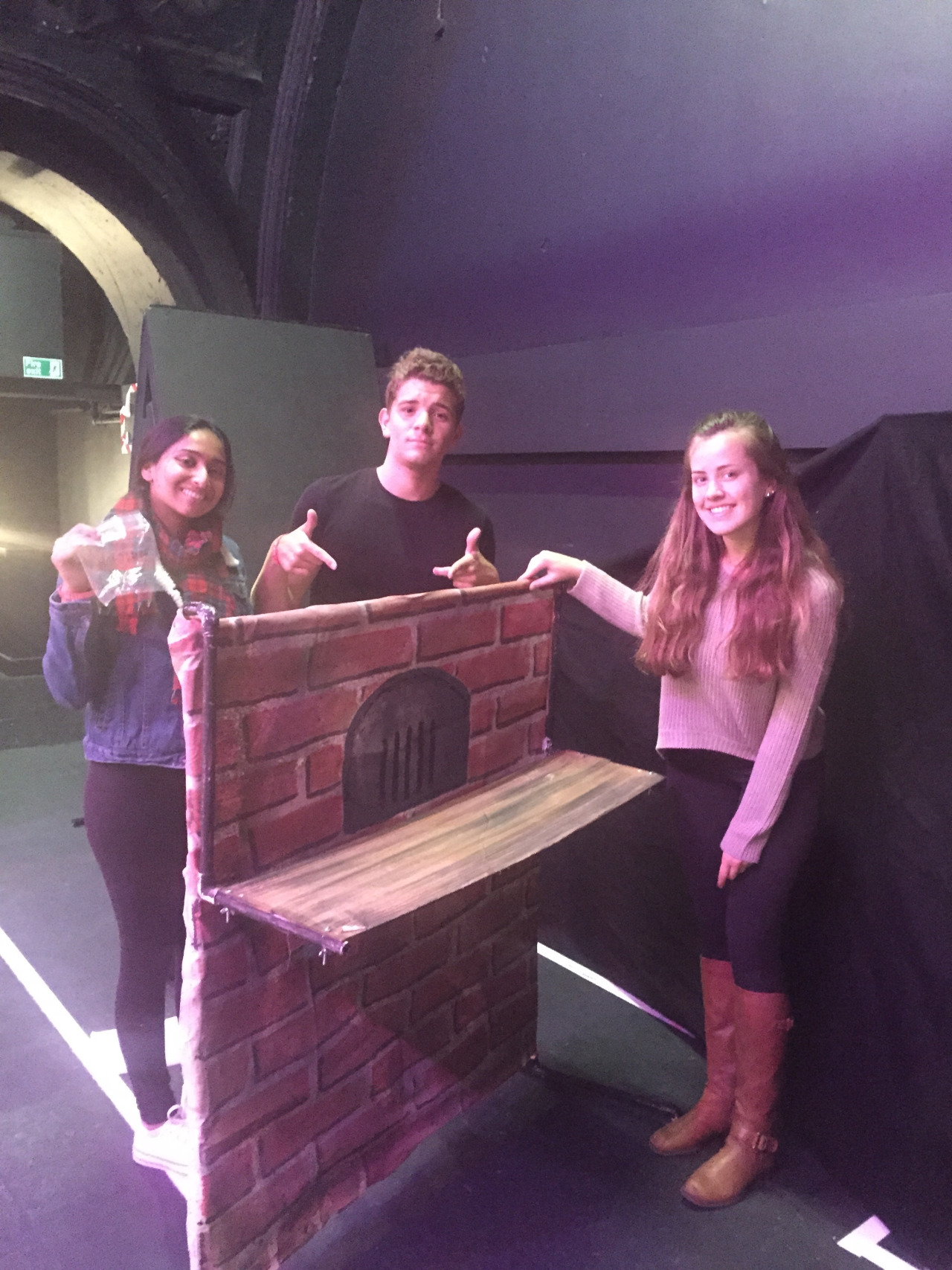
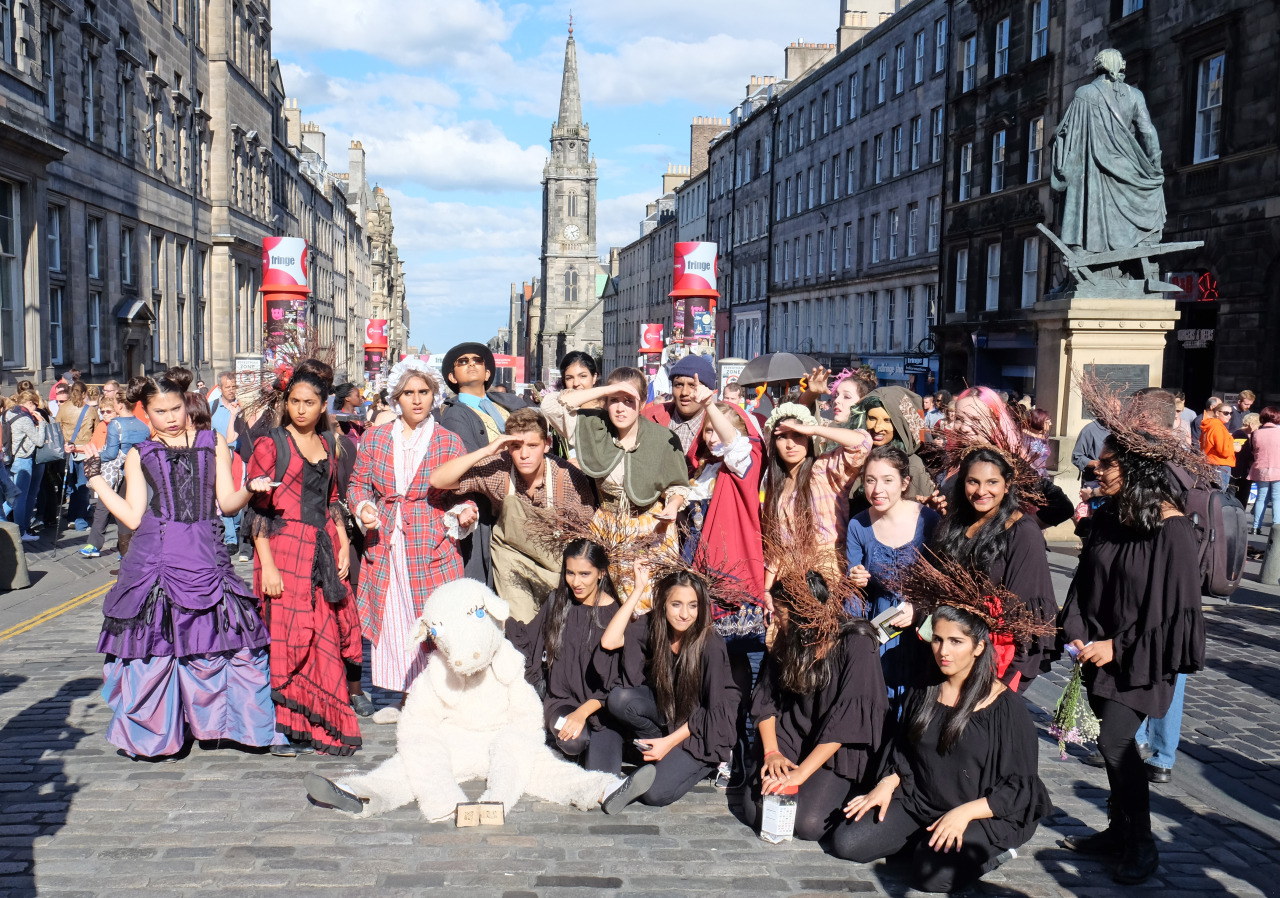
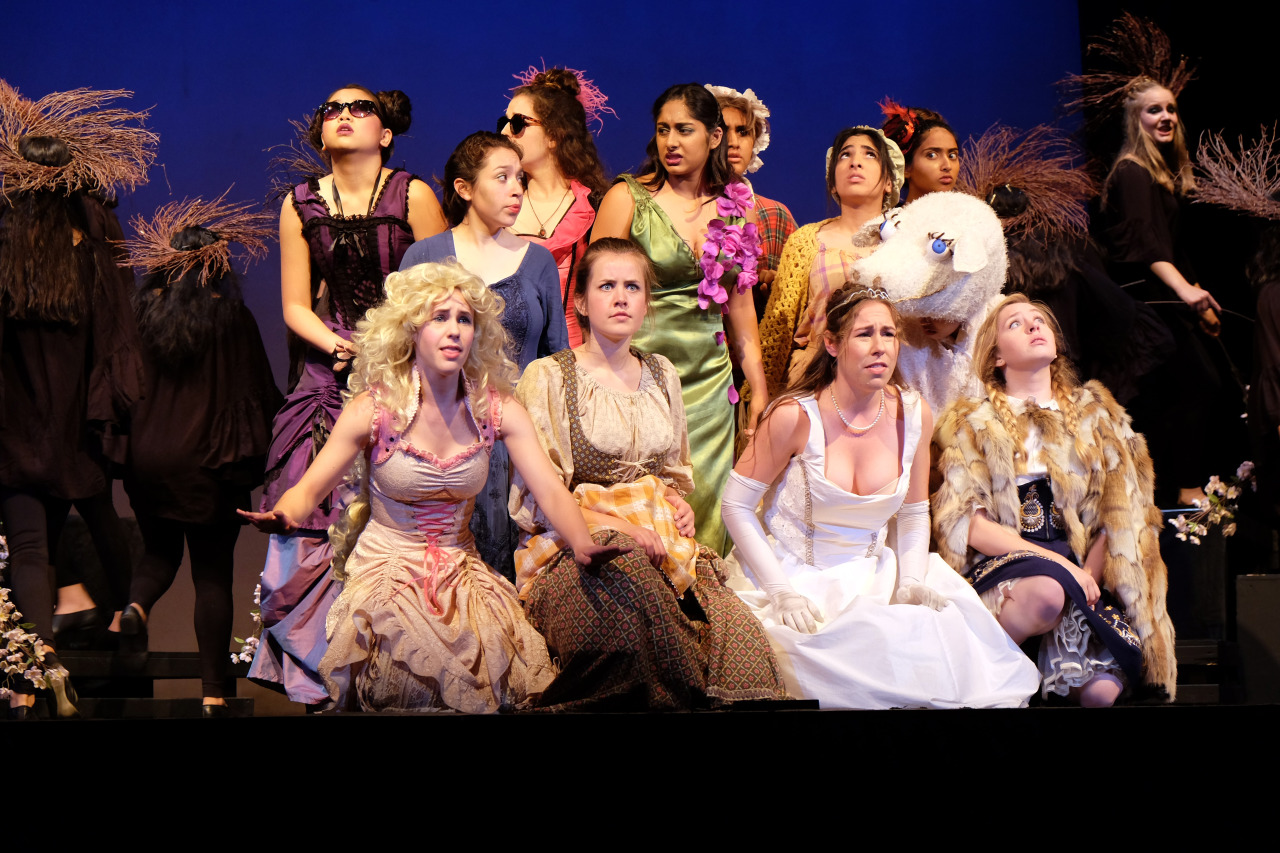


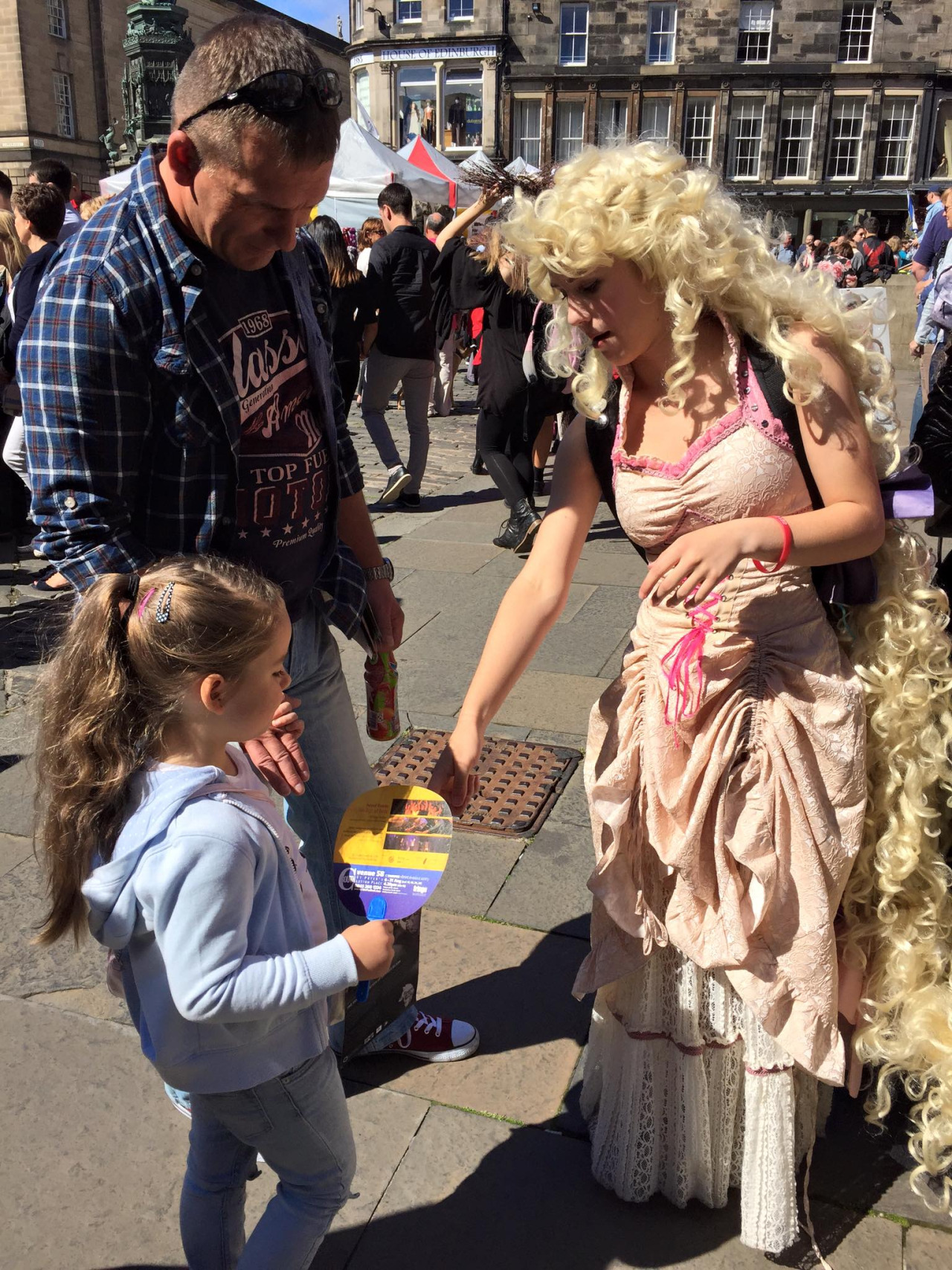
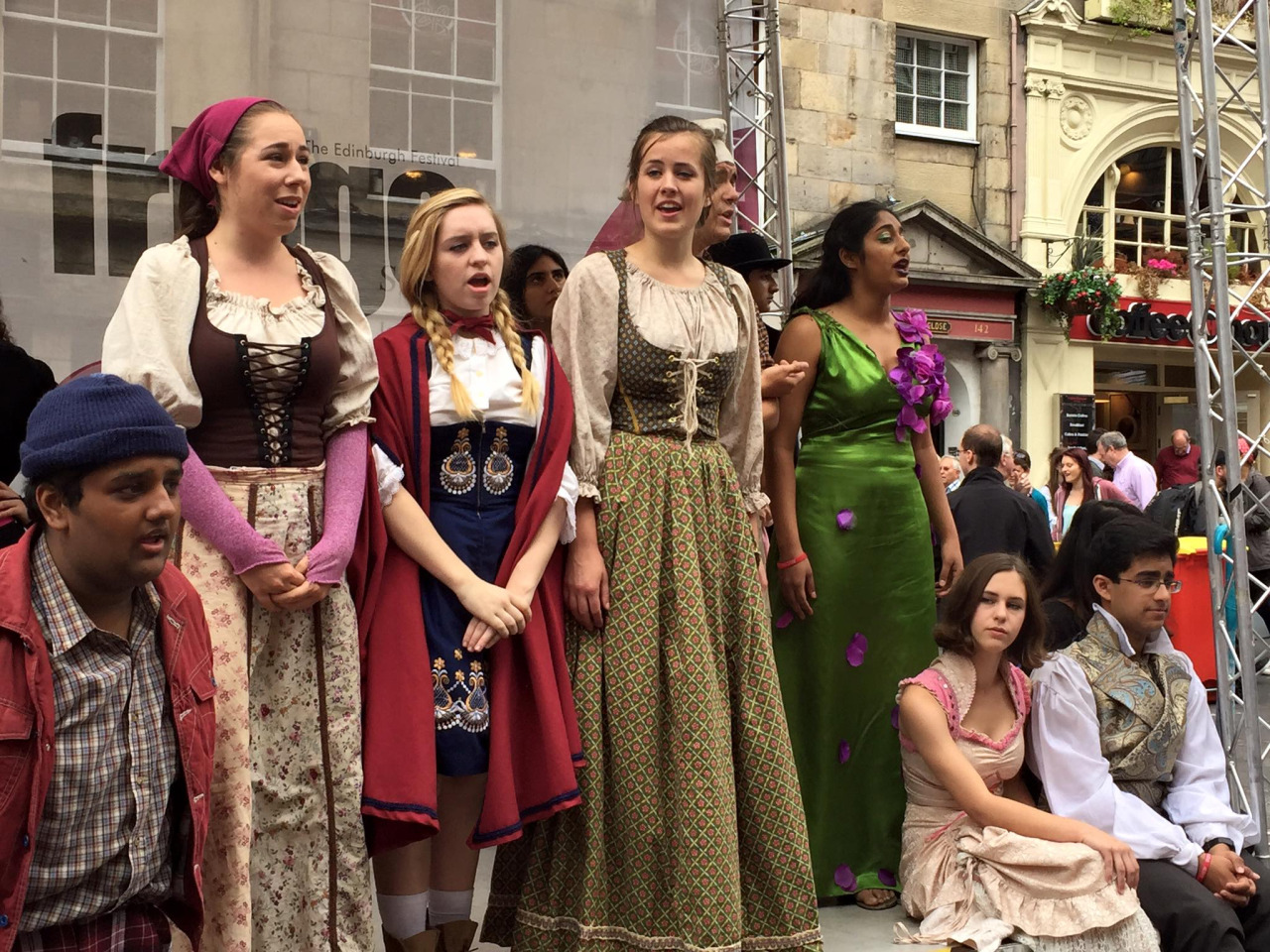

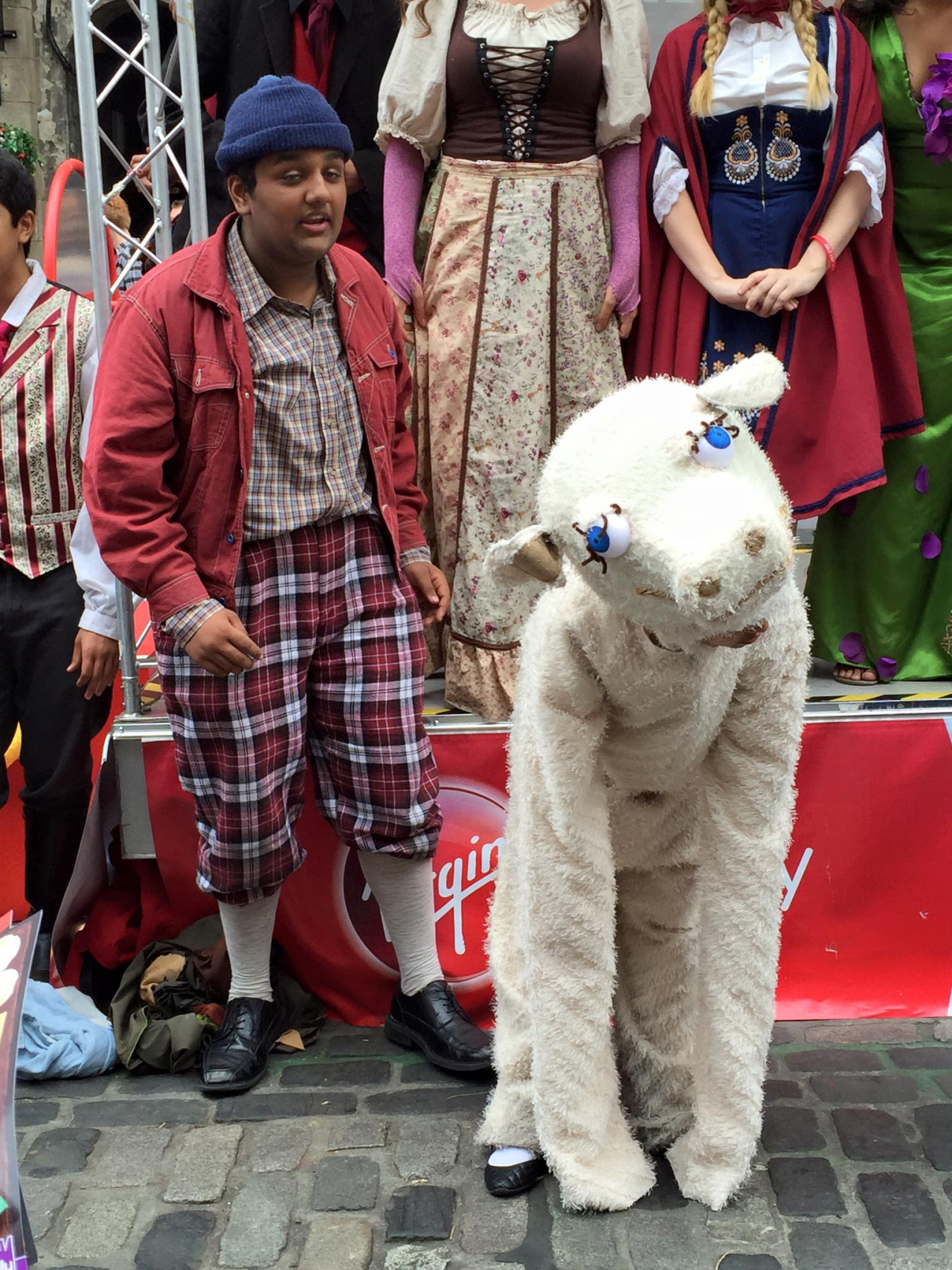
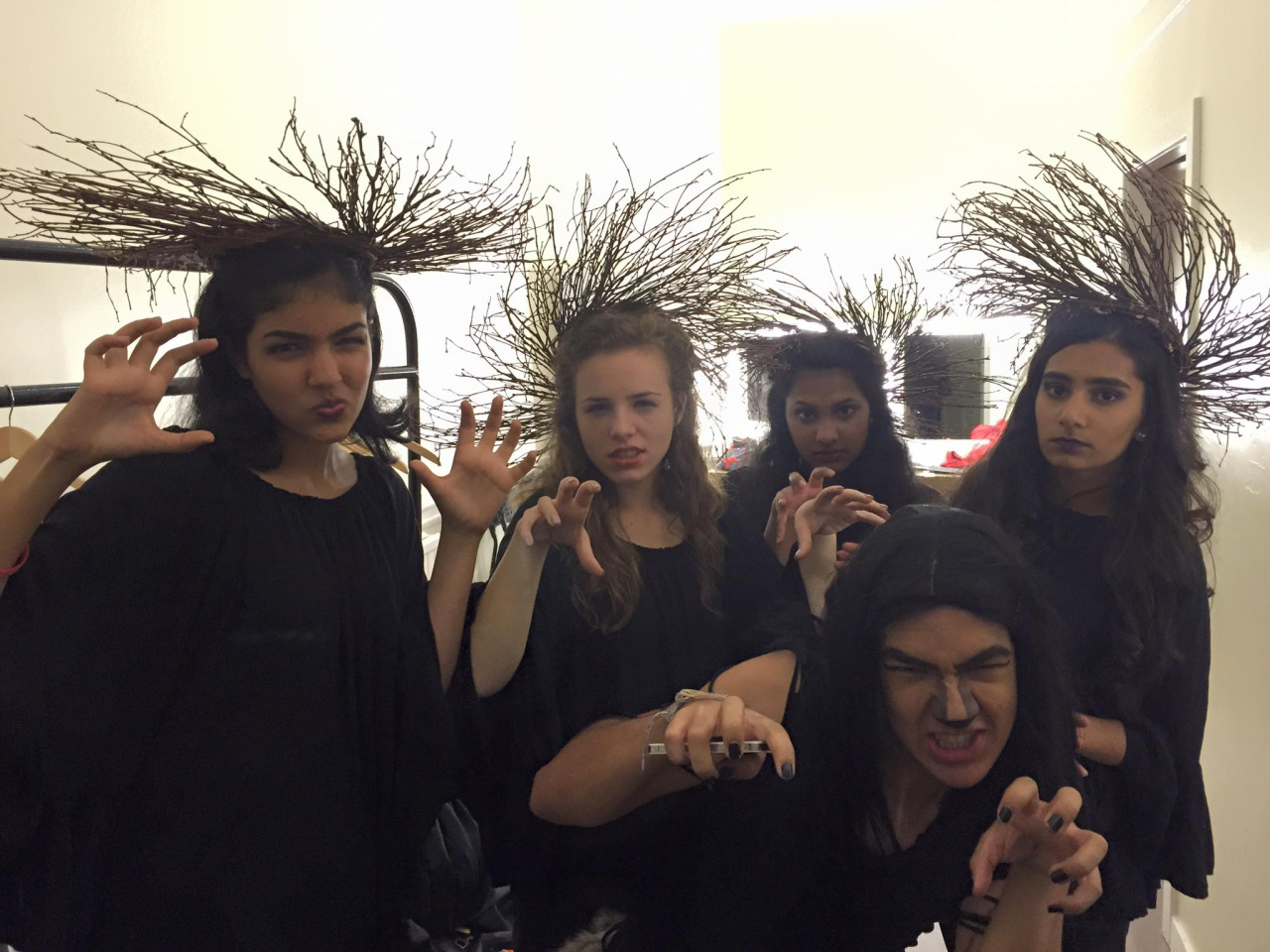
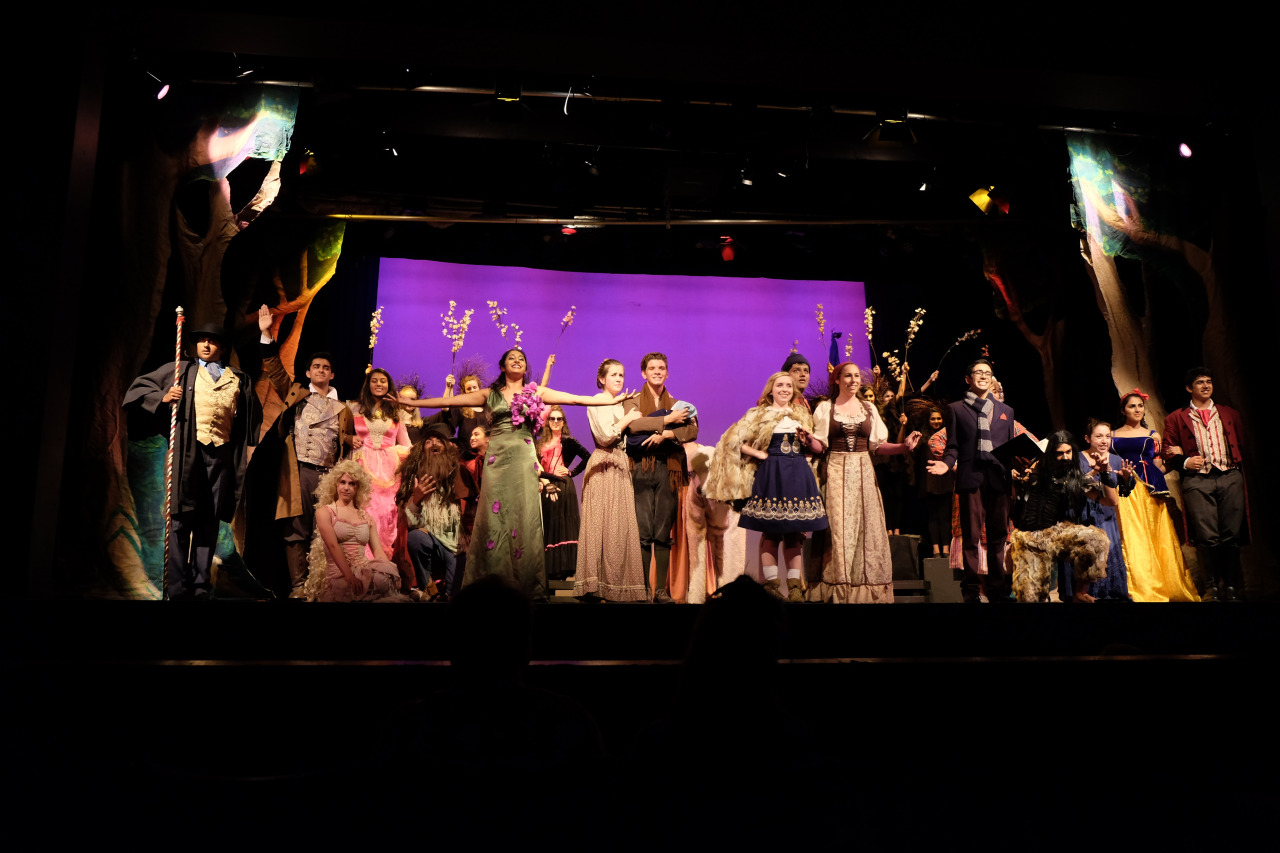

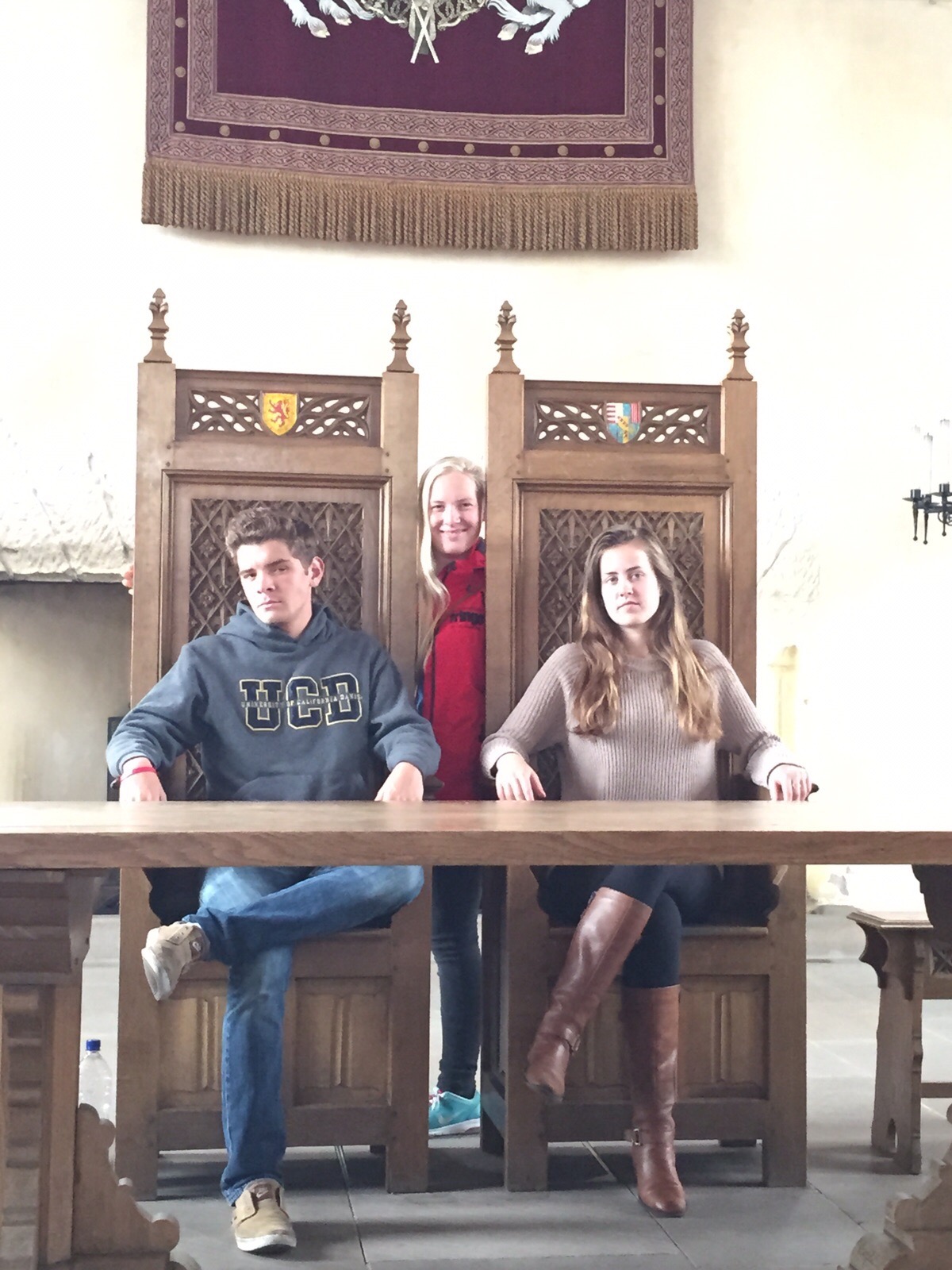

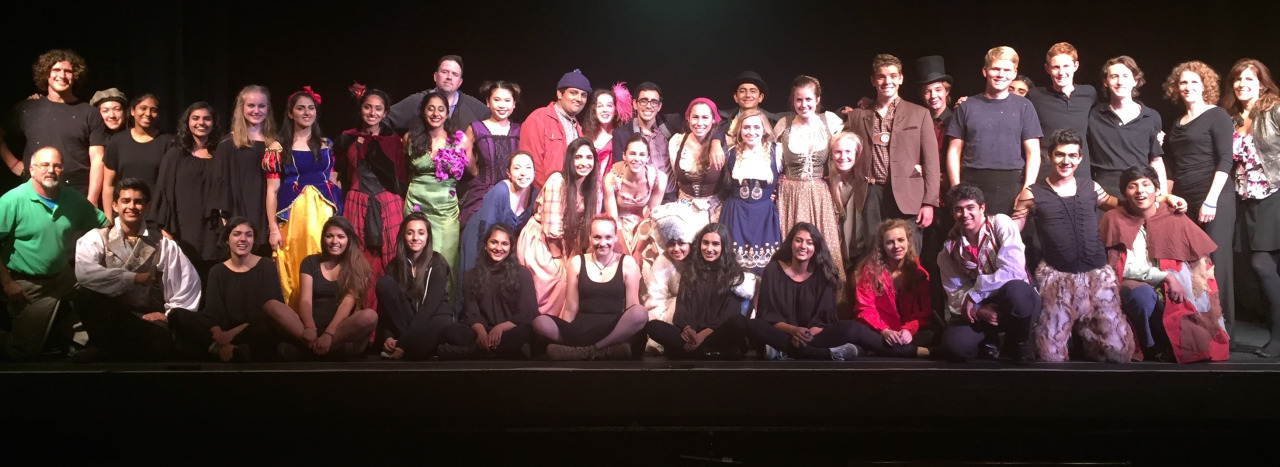
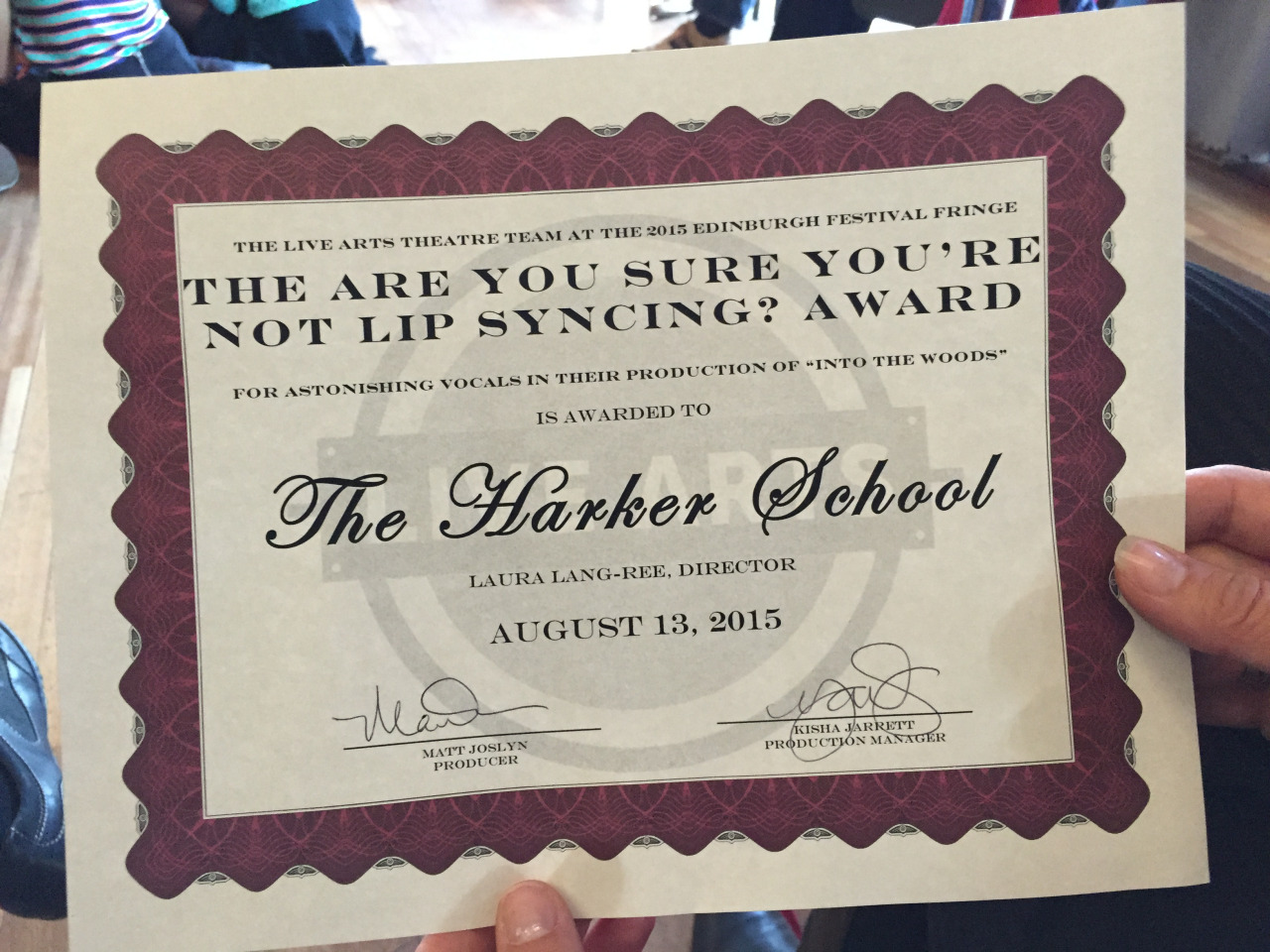
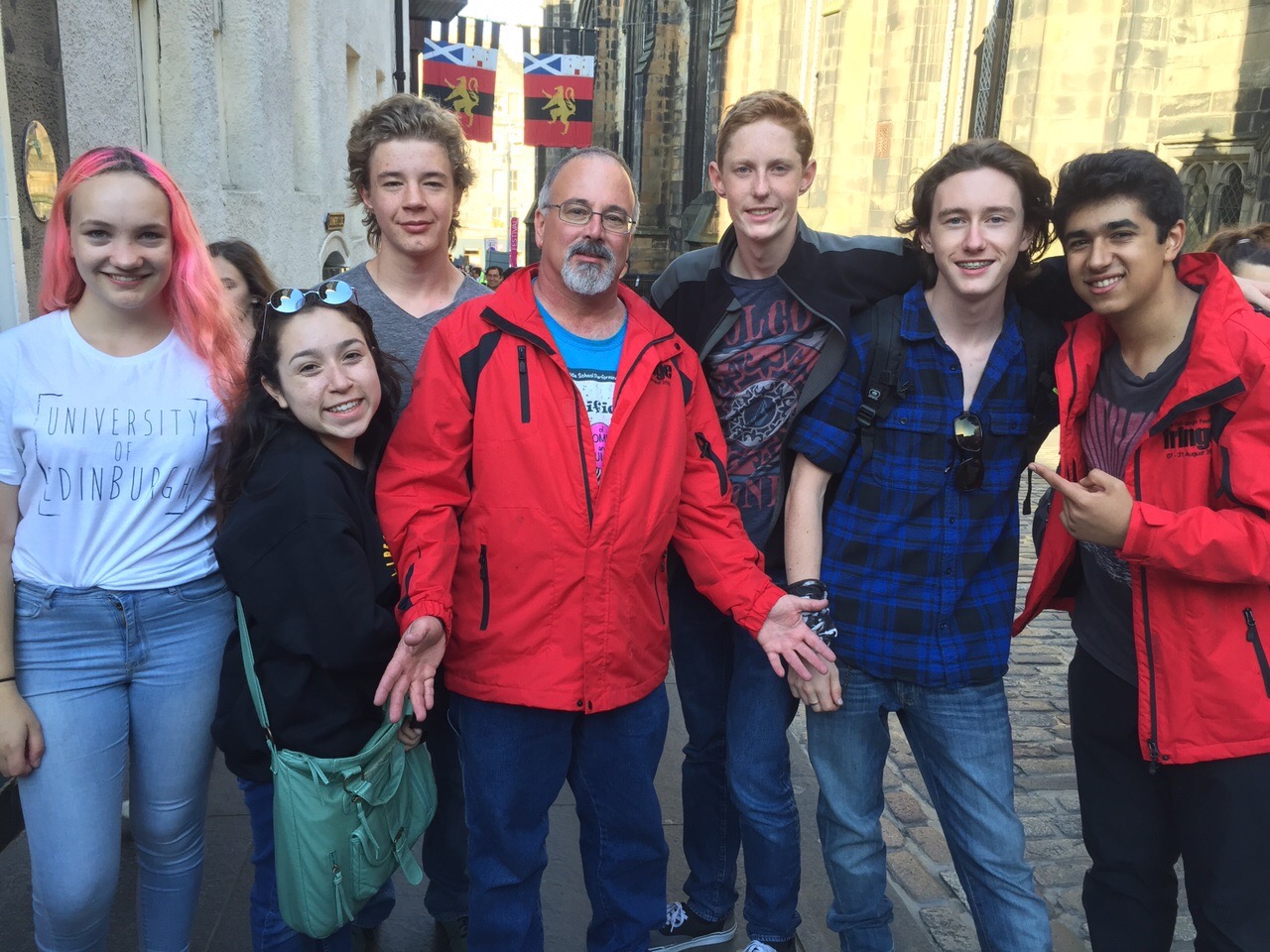
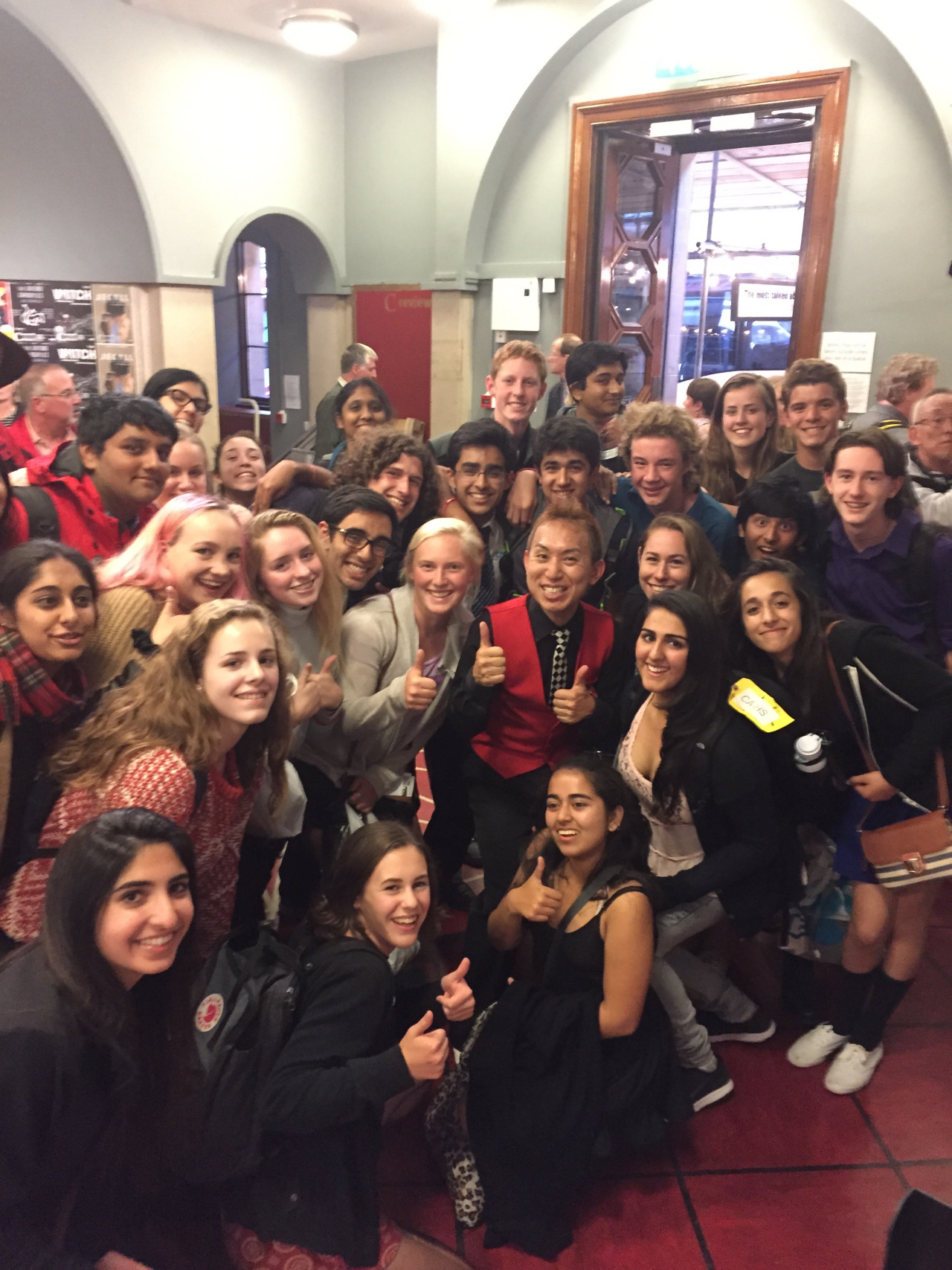










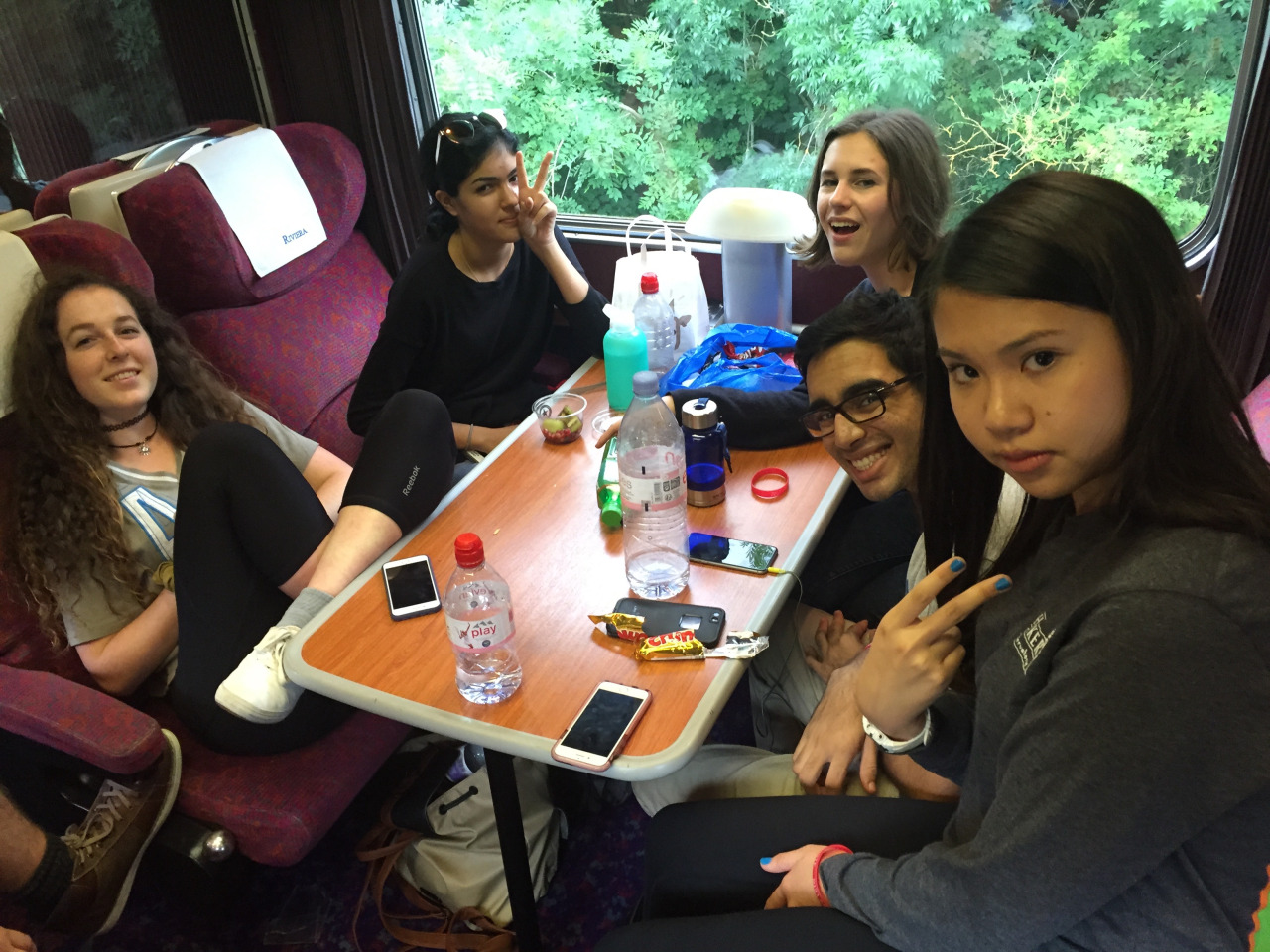
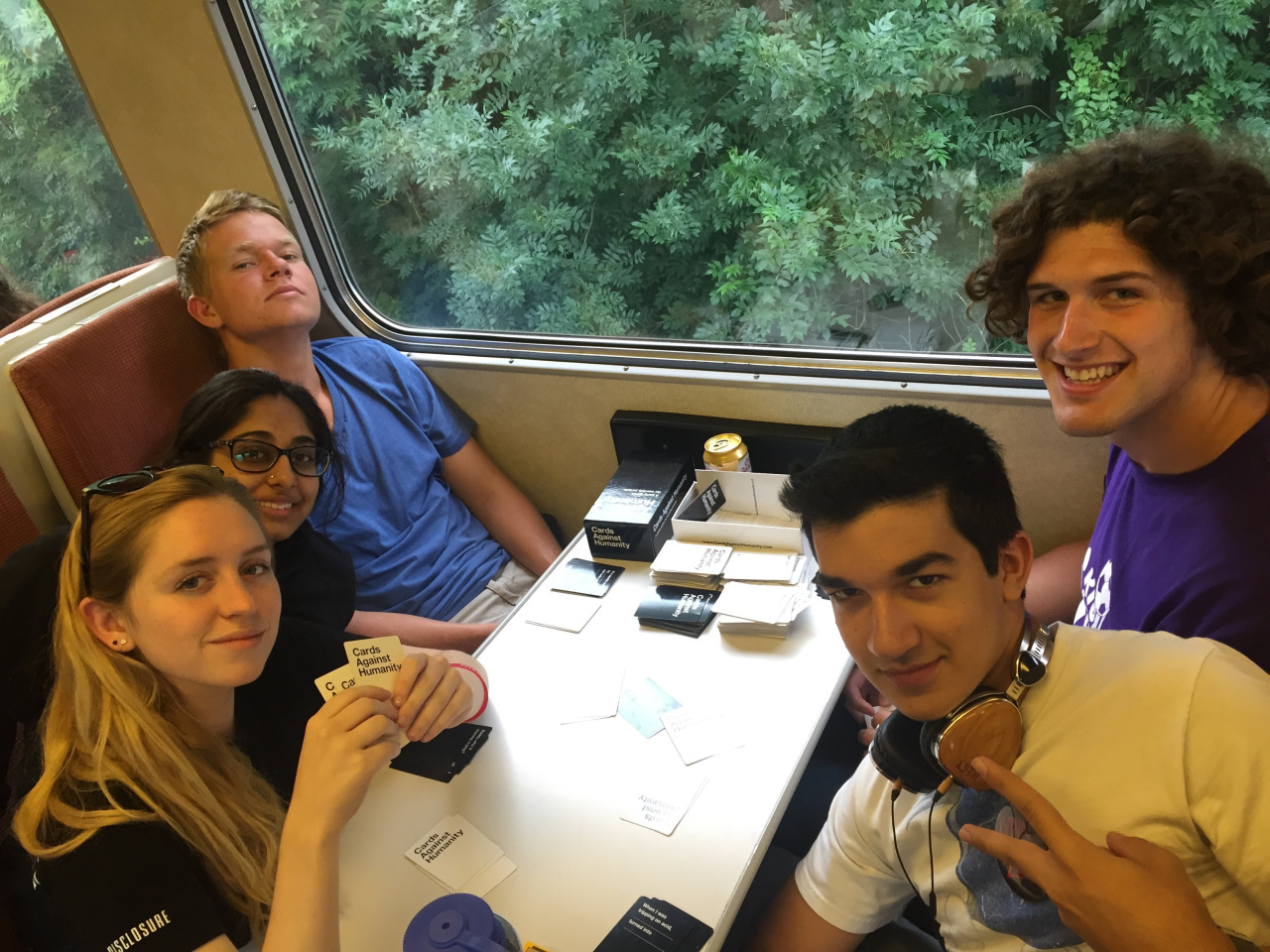

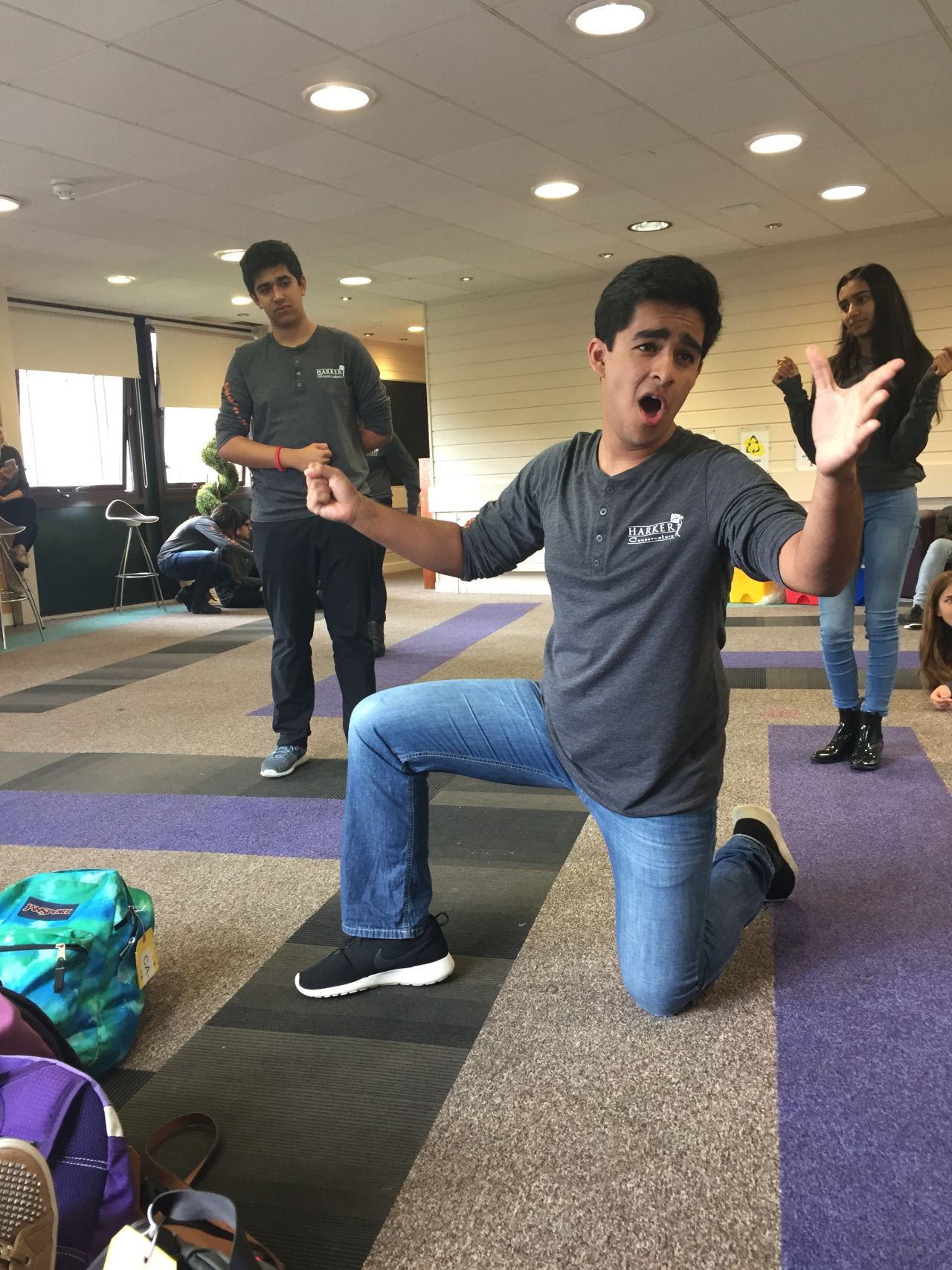

Festival Fringe began in 1947 when eight alternative theater companies arrived at the Edinburgh International Festival to perform rogue, taking advantage of the large crowds that had come for the official shows. In 1994, the American High School Theatre Festival (AHSTF) formed and instituted a competition to choose and facilitate the appearance of high-caliber secondary school drama departments at this mecca of arts festivals. Several decades later, Festival Fringe now spans weeks and offers space for nearly every kind of performer.
Attending the Fringe is like no other experience for Harker students, Lang-Ree added. “There’s a big part of being an artist that people underestimate: observation. One of the main ways that we grow [as artists] is by observing and learning and then trying it for ourselves.”
Harker’s participation at the Fringe dates back to 2007, when the now-defunct American Musical Theatre of San Jose saw the Harker Conservatory production of “Urinetown” and nominated it for consideration by the American High School Theater Festival.
“They took a look at the work we did and recommended that we come be one of the shows they produced in Scotland that year,” said Brian Larsen, production manager. After a lengthy adjudication process and a memorable first year at Fringe, Lang-Ree decided to try to attend every four years, provided Harker was one of the selected schools. “It’s logistically a big time commitment, so not having to try and wrangle that more than every four years seemed like a good interval for all of us,” said Larsen. On their second trip to Edinburgh, in 2011, the Conservatory took their production of “Pippin” to Fringe.
“It’s all going to be in such a whirlwind,” Caroline Howells ’15, who played Cinderella, predicted when rehearsals began. “I imagine that we’ll get on stage and before we know it, it will be over.”
“Into the Woods” inspired extraordinary excitement in this cast and crew. Stephen Sondheim’s famously rich and challenging score with its thematic complexity has achieved legendary status in the nearly 30 years since the musical premiered.
“Musically, it’s very sophisticated,” said Catherine Snider, musical director. “So there’s always a little bit of extra-special care that needs to go into preparing a musical when the music is simply so difficult to learn.” Sondheim devised subtle musical motifs for each of the story’s rich assortment of fairy tale characters, all searching for their own happily-ever-afters. Sondheim’s music is couched in a story that puts fairy tale characters into situations that contort their (and the audience’s) preconceptions about supposedly happy endings, daring to ask what happens when people get what they think they want. Act 1 concludes with what most would deem a happy ending, but things change in Act 2.
“‘Into the Woods’ explores what happens after the happily-ever-after, when our wishes aren’t quite what we thought and what we wanted kind of falls apart,” Snider said.
It’s a lot for actors to learn and digest, but it makes for a musical that is rewarding to perform, as well as witness. “Usually in a musical, maybe the music will be harder or the dance might be harder,” said Lang-Ree. “One element might be more difficult than the others, but for ‘Into the Woods’ it was the combination of the acting and the singing that was at a really, really high level, so that’s what made it unique.”
Snider’s experience and insight proved valuable even to students who had been preparing before the school year began. Zoe Woehrmann ’15, who played Little Red Riding Hood, spent much of her time leading up to the first rehearsal listening to the original Broadway score, was initially unsure of how to approach “Your Fault,” one of the production’s more complex pieces. “I was like, there’s no way we’re all going to be able to do this,” she said, describing her earlier anxieties. “But it was actually the first song we learned in rehearsal, and we just took it very slowly, and were just doing the rhythms, and then added in the actual singing.”
For all its exacting discipline, nailing down the technical minutiae is just one part – albeit a large part – of constructing an effective portrayal. These are characters, after all. “It is absolutely 100 percent about telling the story,” asserted Lang-Ree, “and you can sing beautiful music and you can act your pants off, but if you don’t have any meaning behind it and you haven’t carefully, carefully taken the audience on a journey about what this story is about, it fails, and it fails pretty big.”
Lang-Ree had been working with costume designer Caela Fujii as early as January to come up with the wardrobe, pouring over images they had collected as possible sources of inspiration, from fantasy to steampunk. Responding to Lang-Ree’s vision for an “earthier” show, Fujii dressed the cast in costumes that played on audiences’ familiarity with the characters without making them seem out of place in the slightly chilling atmosphere.
Just a month away from the Harker premiere, actors under Lang-Ree’s direction had already spent considerable time sweating out the details of their performances: when to look at the audience, how slowly or quickly to move during a crucial scene, honing the ability to belch on cue. Some of it was familiar territory for the more experienced actors in the cast. Others were still acclimating. “I’ve played the bad guy before, but never this sort of creepy thing,” said Emre Ezer, grade 11, who played the Wolf. “I want to make it so that I scare everyone but also not so much that they go, ‘ah, oh my god,’ but ‘wow, that’s amazing that he can scare me.’”
The results of Lang-Ree’s handiwork were apparent in the great strides the students had made since rehearsals began. For weeks they had been listening to Lang-Ree tell them to “experiment: overdo it” or to “tell the audience” or that “there’s a lot of words that bring heat. What are you going to do about that?” The visible and audible increase in the students’ confidence showed they had taken it to heart.
Lang-Ree, as director and producer, was the glue that held the whole show together and – to mix metaphors – the rudder that steered the ship. “She really is the best director of student theater I’ve ever worked with,” said Snider. “The kids’ confidence and skills really develop under her nurturing guidance. The games she had the kids play before rehearsals, the acting exercises, the script study – it all led them to where they got.” Lang-Ree has what amounts to a standing invitation to bring her productions to Fringe and there is no stronger testimony to her leadership and consistency.
Because it was one of the only days in which the entire cast and crew could be available for several hours, they spent a Saturday afternoon in April at the middle school campus theater setting up lighting cues. “It’s hard on the actors,” Larsen said. “It can get boring.” This is largely because the cast spent much of its time standing in a single spot on stage while lighting designer Natti Pierce-Thomson adjusted changes from the tech booth, using lines from the music and Lang-Ree’s vision for the show’s look as her guide to the subtle-yet-crucial alterations to the lighting that will make all the difference once the show goes live.
Putting on a show at Fringe is tricky almost by definition. To make room for the thousands of performances at the festival, each group has a total of two hours to set up, do the show and tear down to make room for the next performer.
“Let’s say our show is 2:15 in the afternoon. We show up at 2 o’clock and the backdoor’s open,” recounted Larsen. “We have 15 minutes to load in the show: scenery, costumes, props, the works. The actors actually show up in costume.” A scant 15 minutes later, the audience files in, and the show begins almost immediately. “Ninety minutes later, we have to be done with the show,” Larsen continued. “We have 15 minutes to load out, because the next group is standing at the backdoor for when that door flies open at 4 o’clock for them to come in and do their show.”
In anticipation, Harker’s veteran set designer Paul Vallerga worked tirelessly to prepare sets and props that were ready for travel and easy to put in place, while also selling the atmosphere of the production.
Over spring break, cast and crew members helped with the construction of the set, painting backgrounds and cutting wood for props, while Vallerga referred to a scale model sitting on the edge of the stage. “It works as sort of a guideline and a communication tool between myself and the director,” Vallerga explained. When it was time to build the set, some key changes had been made. The stair-like platforms on the scale model have been realized as ramps. Instead of climbing stairs, the characters now appeared to be traversing hills, making the ramps more appropriate for the story’s setting.
“[In] this show, there’s a lot of stuff, and usually it’s done in a very lush kind of way,” said Vallerga, referring to the trees and towers and giants that typically accompany larger productions. Obviously this won’t work for a comparatively modest production, much of which will be packed up and flown to another continent. “We’re doing a style where we suggest all of that stuff,” Vallerga continue. He achieved this by combining painted backgrounds “and some very stark black pieces … almost like a puppet show or a Japanese bunraku drama.”
Come opening night at Harker, all the blood, sweat and tears made sense – the ceaseless rehearsals, the little-by-little ironing out of mistakes, the minutes of standing, the sawing, the painting, the precision tweaking of knobs, the belching on cue – all of it. A first-time watcher could easily overlook the months of work that went into the ensuing two-and-a-half hours of drama, satire, musical dexterity and complex choreography. The show is complete, its performers ready; now to the matter of getting it to Scotland.
The cast and crew’s travels to Edinburgh were not without hitch. A scheduling glitch resulted in a late arrival, and Lang-Ree had to cancel a rehearsal as a result. The first full day was nevertheless successful, the first rehearsal in Scotland turning out to be “one of our best,” said Lang-Ree in a blog post. “Cast members were still creating funny, thoughtful new moments for their characters and all of us had such a blast watching each other grow in rehearsal, really for the last time.”
Shortly, the cast and crew were out on the Royal Mile, the main drag for the festival, working diligently to make sure their shows would have an audience. Donning eye-catching red jackets, the students had worked out clever promotional tactics, handing out bags of jelly “magic” beans and climbing on the shoulders of fellow students to grab attention on the heavily crowded thoroughfare. The strategy seemed to work, as their opening show drew more than 60 attendees, a strong pull for an event with as many offerings as Fringe boasts.
But in order to keep that momentum, the students had to get creative. “I found that when we went out in costume, the process of selling our show was much more effective,” recalled Madi Lang-Ree ’15, who played the Baker’s Wife. “People would stop and stare at us, everyone loved to pet Milky White [a cow played by Shivani Awasthi, grade 11] and the princesses were very popular among kids.”
Often when assembled on the street, students would sing a piece from the musical a cappella, drawing audiences more than a hundred strong. “Being a performer amongst hundreds of others, just trying to sell our craft, was so inspiring, especially since that’s what I want to do with my life,” Madi Lang-Ree said.
Woehrmann said the street recruiting effort “taught me so much about confidence, marketing and just having fun with other friendly performers.”
When it came time to perform the shows in earnest, the cast found themselves confident and prepared, no doubt in large part due to their well-rehearsed and executed performances at Harker. “When arriving in Scotland,” said Madi Lang-Ree, “we knew the show so well that it was an incredible experience to really just let go and enjoy every scene and every song without some of the usual fears that might come with the musical back in April.”
The cast and crew also demonstrated poise in unfamiliar situations. “Over our four shows, I felt like we grew immensely as a cast both on stage and off,” Lang-Ree continued. “Each performance was unique in that we had very different audiences, and the process of moving our set onstage and off changed each day.”
Technical elements are a unique challenge for a crew at Fringe, especially on the first day. Early on the first day of technical rehearsal, the crew practiced the 15-minute setup and strike. Despite jet lag and that missed rehearsal the job went well and Laura Lang-Ree was impressed. “Of all the techs we have run at the Fringe, this was our smoothest,” she wrote in her blog.
Students spent much of their downtime exploring the Fringe’s cornucopia of theater experiences, including, for example, a meta-retelling of “Jurassic Park” in which a family of three recounts the story of the classic Steven Spielberg thriller, and a show by the Chicago-based improvisational group Baby Wants Candy, who later put on a special workshop for the Harker students.
“I was insanely nervous for the workshop because typically improv makes me nervous, but this was improv plus rhyming and you had to keep to the beat,” said Woehrmann. “It ended up being ridiculously fun and surprisingly simple once we all got the hang of it.”
On the night of their last Fringe performance, the finality of the adventure began to hit home for the cast and crew, who were visibly tearful as the show ended at midnight in front of their largest and most enthusiastic crowd of the trip.
Later, at the AHSTF closing ceremonies, each school at Fringe received a certificate related to inside jokes developed between school casts and the tech team at Fringe. Presented to Laura Lang-Ree and company was the “Are You Sure You’re Not Lip-Syncing?” award, because during Harker performances, Larsen received text messages from another production manager in an adjacent room that read, “They sound like angels!”
There would be time for cultural day trips and shopping and castles and museums over the next few days, but their journey as performers and artists, starting with their very first day of rehearsal at Harker, will end up being what they hold onto the most.
“I sincerely hope that I can remember every detail of this trip for a really long time,” said Madi Lang-Ree. “I absolutely loved every second of it, from our insane two hour tech (which was actually very successful on Fringe terms!), to selling on the Royal Mile and performing at our beautiful Church Hill Theatre and from walking the highlands with the fuzzy cows to hearing bagpipes on every street corner. It was absolutely a once-in-a-lifetime experience and I am so, so grateful for it.”
“I think I will remember the seniors after the final performance the most,” said Woehrmann. “We were all just so emotional after finishing our last performance at Harker. For some of us, it had been 13 years coming, and we all definitely put all we had into that last performance.”
Harker Multimedia Feature Team: Zach Jones, writer; Eric Marten, video; Mark Kocina, San Jose photos and photo curation.

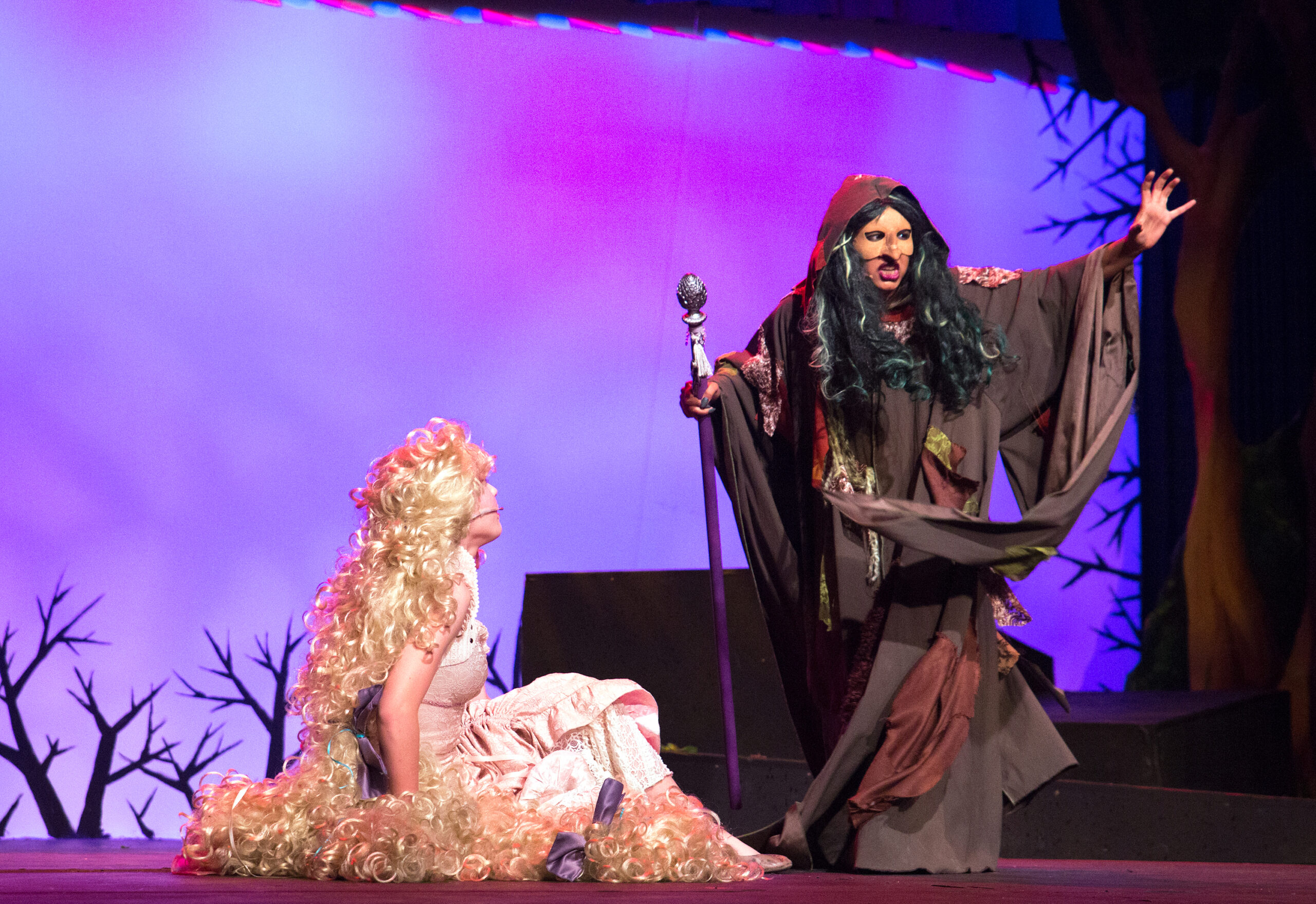
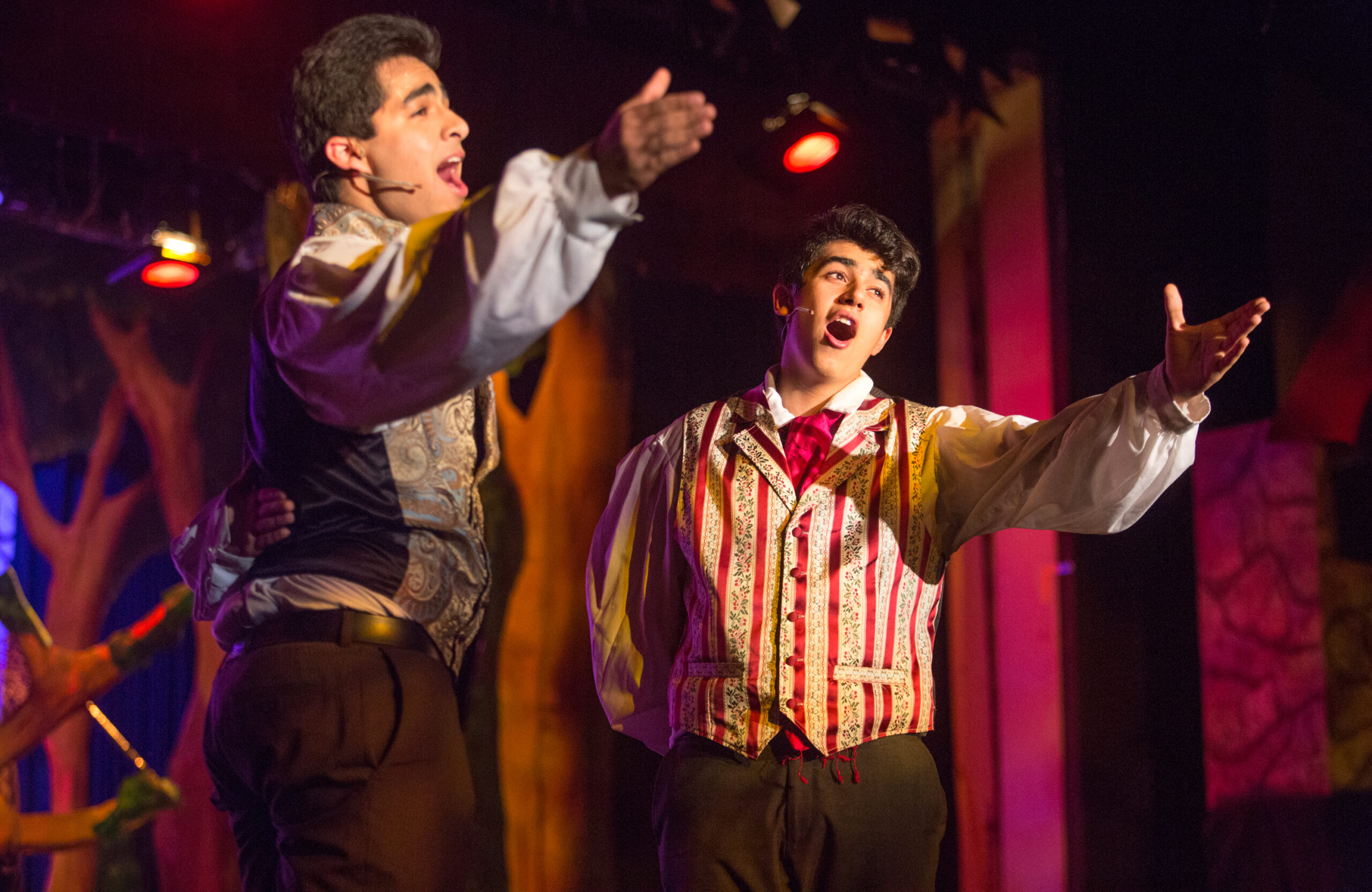




Previous Next